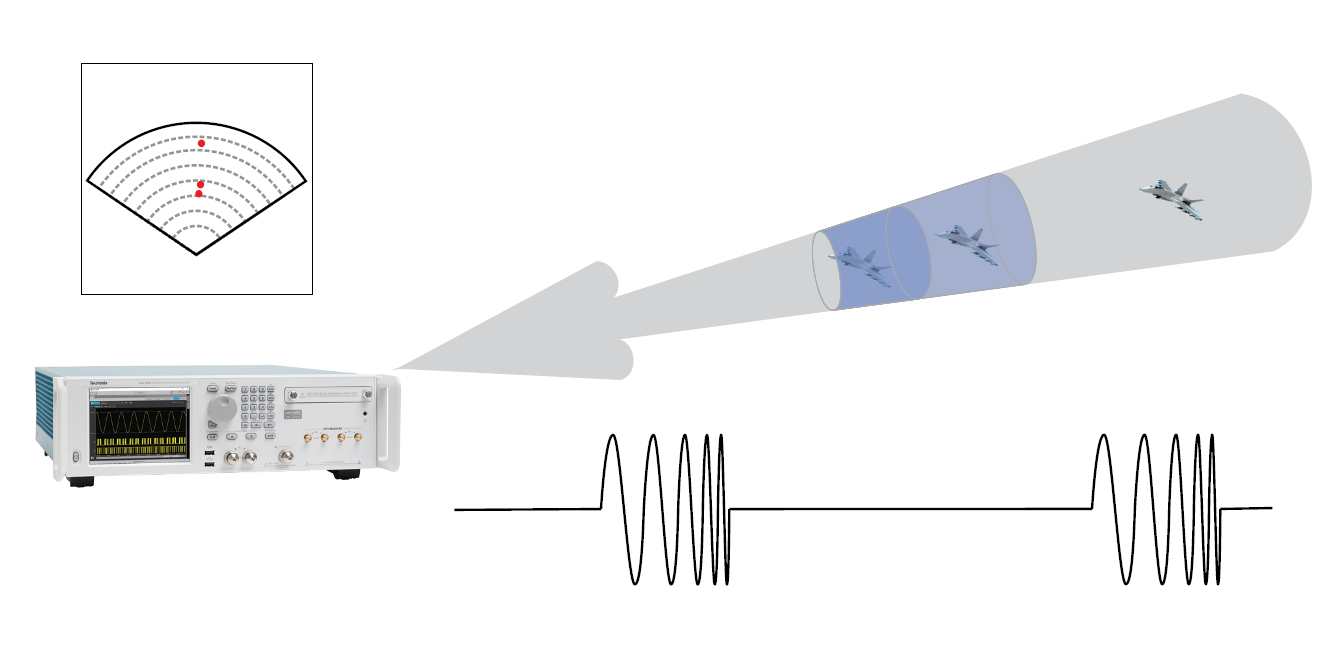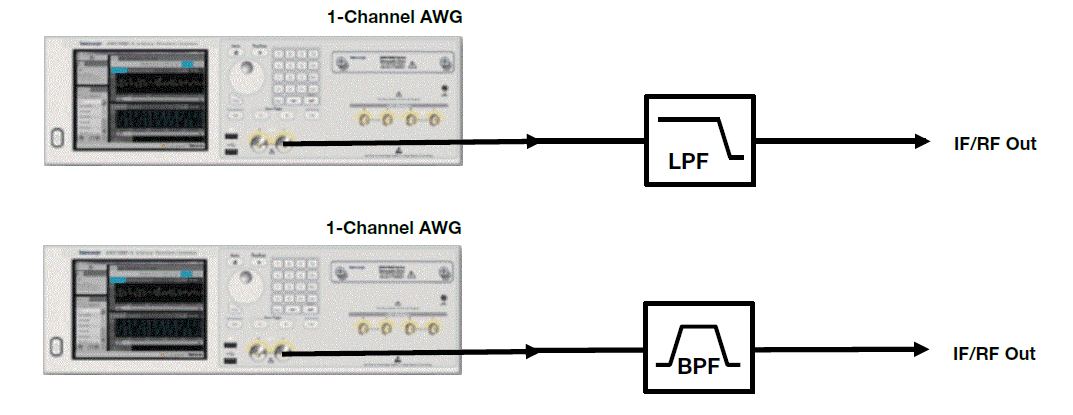

Radar signals’ qualities make them inherently difficult to recreate with a signal generator. Their combination of carrier frequency, modulation bandwidth, and in most cases, their pulsed nature creates a series of requirements difficult to match with existing instrumentation. The increasing complexity of radar systems, the growing use of complex modulation techniques such as Barker codes, poly-phase codes, linear frequency modulation (LFM), and other Ultra-Wide Bandwidth (UWB) modulation techniques, combined with signal quality requirements for a successful test, impose severe constraints on the stimulus equipment used in radar testing. The need to emulate multi-antenna radar systems based on phased-array antennas or more recently, MIMO architectures makes it necessary to generate multiple signals with tightly-controlled timing and phase alignments. These same requirements apply to more than just modern radar systems, the methods discussed in this blog also apply to frequency-hopping spread spectrum communications, or any RF signal where bandwidth, modulation complexity, and signal quality are important.
Traditionally, radar signal generation has been implemented with a baseband signal generator and an RF/μW modulator, sometimes integrated as one piece of equipment. This has historically been required because RF signal generators lacked the bandwidth to output a fully formed radar signal. Increasingly, high-performance arbitrary waveform generators (AWGs) are being used for the number of benefits they offer.
Modern AWGs offer sample rates that allow direct RF signal generation, without the use of a separate RF modulator. This means the effective modulation bandwidth stretches from DC up to half the AWG sample rate (DC – 20 GHz in some cases).Without modulation bandwidth limits, a single AWG channel can be used to simulate multiple RF emitters simultaneously by mathematically combining their RF signals. AWGs also offer sequencing, which enables you to string multiple waveforms together with looping and branching. Proper use of the sequencer enables the recreation of complex scenarios like RF reflections and IFF or SSR, without taking up substantial waveform memory. Furthermore, many software packages are available that simplify the creation of the complex signals required for radar and electronic warfare system testing.
Radar Signal Generation with AWGs
AWGs can generate radar signals through three basic methods:
-
Baseband generation: the AWG generates the time-domain signal to be applied to an RF/μW modulator. This method is equivalent to a traditional signal generation technique. For simple signals where pulses are generated by controlling the envelope of a carrier, a one-channel AWG output is applied to an amplitude modulator (AM). For more complex signals requiring complex digital modulation or linear frequency modulation (LFM) (i.e. chirps) both the amplitude and the phase of the carrier must be controlled. In this case, a quadrature modulator must be used. This requires two baseband signals: the In-Phase (or I), and the Quadrature (or Q) components as shown in Figure 1. These two baseband signals can be generated by an AWG with two channels or by two synchronized single-channel AWGs.

-
IF (Intermediate Frequency) generation: the AWG generates a ready-to-use modulated signal at a relatively low carrier frequency. Often the signal can be applied directly to a signal-processing block in the receiver or transmitter. In situations involving the final RF/μW frequency it is necessary to use an up-converter block to reach the final carrier frequency.
-
Direct RF generation: the AWG generates the modulated carrier at the final RF/μW frequency. No additional signal-processing blocks aside from the normal filters or amplifiers are required as shown in Figure 2.Here you should take into consideration which Nyquist band you want to operate in. In the first Nyquist band a low-pass filter is used with a cutoff frequency of half the AWG sampling rate (the Nyquist frequency). The required AWG sampling rate is dependent on both the carrier frequency and the modulation bandwidth, since a complete RF signal is being out put. You might instead be interested in the radar signal image located in the higher frequencies of the second Nyquist band, which ranges from half the AWG sampling rate, up to the sampling rate itself. Here a band-pass filter should be used, and the AWG sampling rate need not be as high. However, signal amplitude, AWG frequency response, and modulation bandwidth will all be larger points of concern.

Figure 2. Methods of direct RF signal generation with an AWG. Pictured at top is a setup for a first Nyquist band generation with a low-pass filter. Below is a second Nyquist band setup, identified by the use of a band-pass filter.
Advantages and Drawbacks
Each of these methods has their own pros and cons. Baseband and IF generation can be implemented with only moderate-performance AWGs. For most signals, a sample rate of a few GS/s is sufficient. But in both cases the modulation bandwidth of the final RF/μW signal will be limited by the characteristics of the modulator or up-converter used. As one example, commercially available instrument-grade quadrature modulators can generate signals of up to 2GHz bandwidth, but this may be not sufficient for some radar applications. Worse yet, wideband quadrature modulation is extremely sensitive to I/Q imbalance or quadrature errors, worsened by the system being split across several instruments. Accurate alignment after careful calibration is required to produce signals of adequate quality.
Direct signal generation offers a simpler setup without the chance of errors due to I/Q imbalances or quadrature errors. But this method requires an extremely fast AWG whose sample rate is at least 2.5 times higher than the maximum frequency component of the signal. This allows room for a low-pass filter and ensures signal integrity. You might also encounter problems of memory depth in your AWG, though this can be mitigated through the use of sequencing. The faster sampling rate eats up record length memory, so an extensive waveform memory of several GS or more is required. Another important advantage though, is that only a single AWG channel is required to generate the radar signal. This equates to a cost savings and allows a single, multi-channel AWG to generate multiple dissimilar carriers or wideband noise for realistic testing.
Traditionally, obtaining good-quality signals with respect to spurious-free dynamic range (SFDR)has been difficult with ultra-high-speed AWGs, given their limited DAC resolution (6 bits). However, the latest generation of Tektronix high-speed AWGs, the AWG70000B Series, offers10-bit vertical resolution at speeds up to 50 GS/s, opening the door to quality Direct RF signal generation beyond the Ku band (12-18GHz) up to 20 GHz. Its maximum 32GS record length allows for recreation of full-length RF signals.
To learn more about radar signal generation with an AWG, download our detailed application note on the topic.



